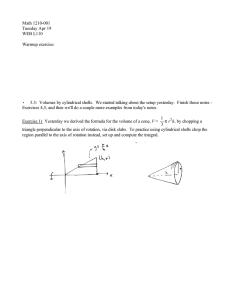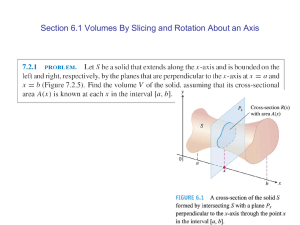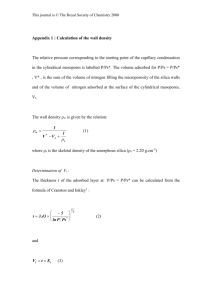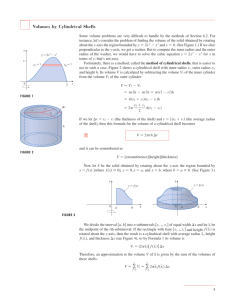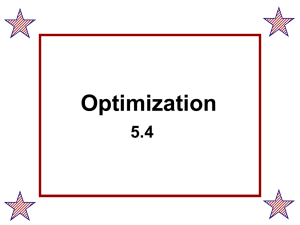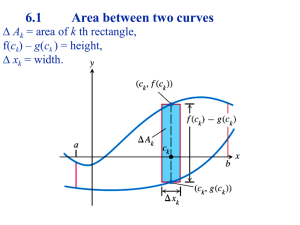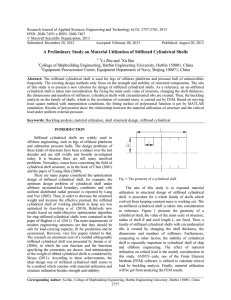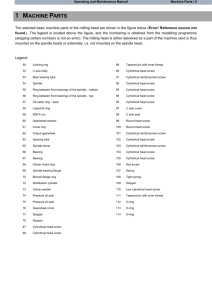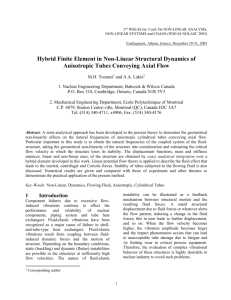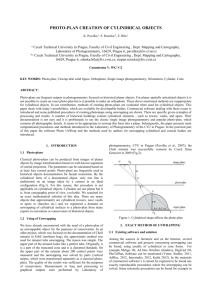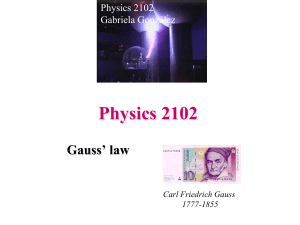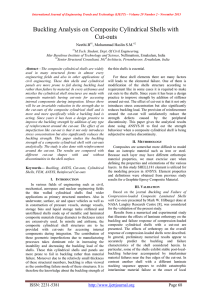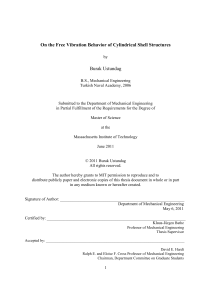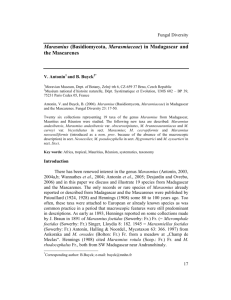6.3 – Volumes of Cylindrical Shells
advertisement
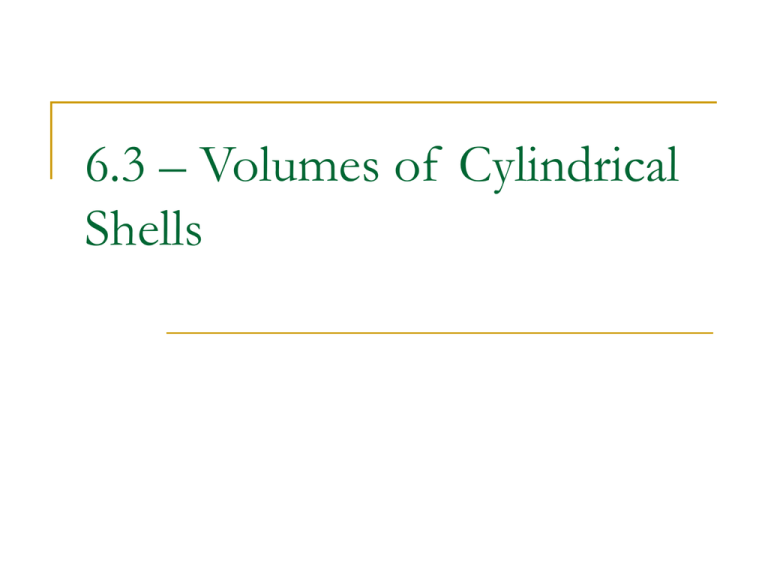
6.3 – Volumes of Cylindrical Shells Derivation Assume you have a functions similar to the one shown below and assume the f is to difficult to solve for y in terms of x. Rotate f about the y axis. y = f (x) xi xo It is too difficult to find xi and xo so that we can find the area of the washer. We need another method for more complicated functions. Cylindrical Shells Let xi be some subinterval and establish a rectangle to estimate the area. When this rectangle is rotated about the y-axis, a cylindrical shell if formed. y = f (x) xi r1 Δr r2 h Cylindrical Shells Now determine the volume of the cylindrical shell. V2 is the volume of the larger right circular cylinder and V1 is the volume of the inner. V V2 V1 r22 h r12 h r r r r h r r r r h 2 r r h 2 2 2 1 2 1 2 2 1 1 2 V 2r h r 2 r1 Δr 1 V [circum ference][height][thickness] r2 h V [circumference][height][thickness] Cylindrical Shells Now assume that the interval [a, b] is divided into n subintervals of equal width Δx. Also assume that xi is taken at the mid-point of each subinterval. This means that ri = xi the height of each cylindrical shell is given by f (xi). The volume of each cylindrical shell is Vi (2 xi ) f ( xi )x Cylindrical Shells An estimate of the total volume is the sum of the volumes of the n cylindrical shells. n V (2 xi ) f ( xi )x i 1 Volume of a Solid Using Cylindrical Shells Therefore, the volume of the solid obtained by rotating about the y-axis the region under the curve y = f (x) from a to b is n b i 1 a V lim 2 xi f ( xi ) x 2 x f ( x) dx n
